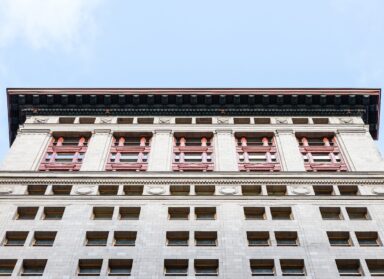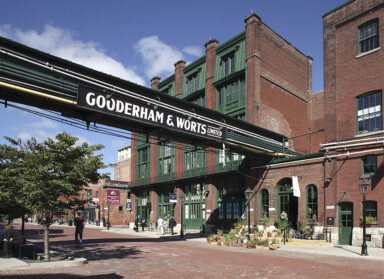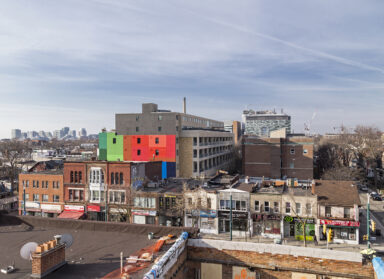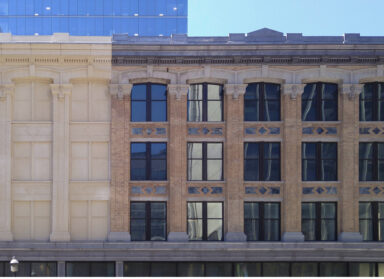Once the tallest building in the British empire, the Royal Bank building at 8 King Street East is a product of the skyscraper phenomenon that arrived in Toronto at the turn-of-the century. More than 100 years after its construction, the building has been renewed. ERA is wrapping up work on this project, which required the full and extensive conservation of the Edwardian skyscraper’s exterior.
The 8 King Street East project was featured by columnist Dave LeBlanc for The Globe and Mail. For more on this project and ERA’s work, read the full article below!
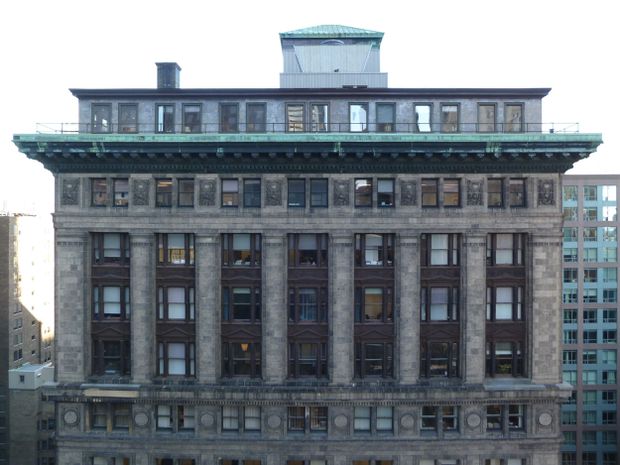
The tower that once topped Toronto shines again
Dave LeBlanc
Special to The Globe and Mail, published April 27, 2021
Although it’s one of the smaller photographs accompanying the July, 1915 Construction magazine article, it speaks much louder than those showcasing luxurious banking interiors, sculpted friezes, or Corinthian columns marching along Yonge and King streets. About six men, wearing suits and moustaches – and no doubt clutching cigars or brandy snifters – cluster and converse behind the thin railing on the 20th-storey observation deck of the new Royal Bank building.
While it’s difficult to read expressions, likely all faces sport some combination of pride, accomplishment, or gravitas. After all, this building had just been crowned tallest in the Commonwealth and, as such, became another indicator of the shift from Montreal to Toronto as Canada’s financial centre. And if one of those men was Montreal-born architect George Allen Ross or his Melbourne, Australia-born partner, Robert Henry Macdonald, he was no doubt feeling chuffed as he looked down at the other new buildings he had bested – especially the formerly tallest-in-the-Empire Canadian Pacific Railway building with its copper-clad rooftop cupolas – along the city’s “Edwardian skyscraper row.”
“By 1915,” writes architect David E. Winterton in a 2015 issue of the Journal of the Society for the Study of Architecture in Canada, “the north shore of Lake Ontario had a new metropolitan skyline, an architecturally hybrid vertical expression of Toronto’s New World prosperity … fairly – and fittingly – described as a half-Edwardian and half-Beaux-Arts concoction.”
Heady stuff.
But, around the same time Mr. Winterton was researching his very good article, his colleagues at ERA Architects were taking stock of what a hundred years of pollution, road salt, freeze-thaw cycles, insensitive renovations and other assorted abuses had done to this former crown jewel.
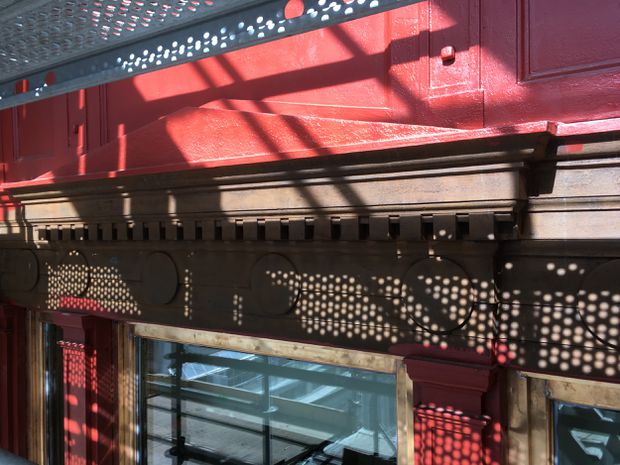
Even at the very top things didn’t look good, says ERA project manager Noah McGillivray: “Instead of repairing [the roof] through the century, they just re-clad over it, trapping moisture; it was rotting, the whole roof, so we did have to take the whole thing apart … profile all the details, match them exactly, and then recreate them in copper.”
On an unseasonably cold day in late April, Mr. McGillivray, his ERA associate Daniel Lewis, and building science and restoration specialist Duncan Rowe of RJC Engineers, inspect these new rooftop details – without brandy snifters in hand – and reminisce about the journey, which saw scaffolding up in 2014 for some plinth repair, then, after a change of ownership to KingSett Capital, envelope the entire building in 2019.
“A big part of the story of the project, really, is that this building faded into the background for a long time. … I think its original character was totally lost,” Mr. McGillivray says.
Something else that might have been lost was the acanthus leaf ornamentation from the columns. Chunks of the plaster, mortar and terracotta block had fallen to the street in years past, prompting the city to order the property owner to wrap them in chicken wire. The terracotta block, incredibly, had been fastened to the building’s steel frame by wrapping wire around it and then slapping mortar over top. This ad hoc approach, Mr. McGillivray explains, happened for only a short while during the “overlap” between traditional masonry construction and modern steel buildings. “They were working it out as they went,” he says, “having one foot in the 20th century and the other in the 19th century with Beaux-Arts detailing.”
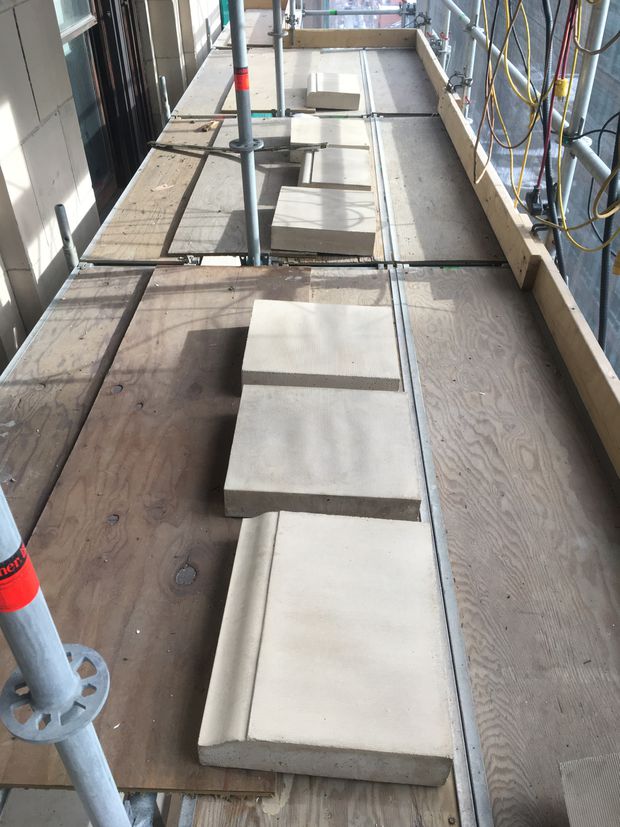
Of course, as much of the original terracotta and acanthus ornamentation that could be saved was, and then remounted, in situ, with new high-strength brackets. But in cases where deterioration was too great, ERA and RJC found a local shop to make a mould – complete with the vertical tooling marks found on the originals – for the 337 reproductions that were needed. For some of this work, the two firms consulted with Chicago-based engineer Amy Lamb Woods, an expert in terracotta, brick, stone, terrazzo and stucco.
Another massive undertaking was replacement of the windows. Badly tarnished, sealed shut with screws, painted over on the inside and, most importantly, completely inefficient, once the city’s heritage folk were convinced with a mock-up, more than 300 new units were fabricated by Roof Tile Management, with brass beauties for the south and west façades, and steel for the non-decorative façades.
“The three of us went to the shop to see how they did it, how they rolled all the brass,” says Mr. Lewis, his English accent getting stronger as his excitement rises.
“It’s traditional methods, little hammers, it was like Santa’s workshop,” Mr. McGillivray says with a laugh.
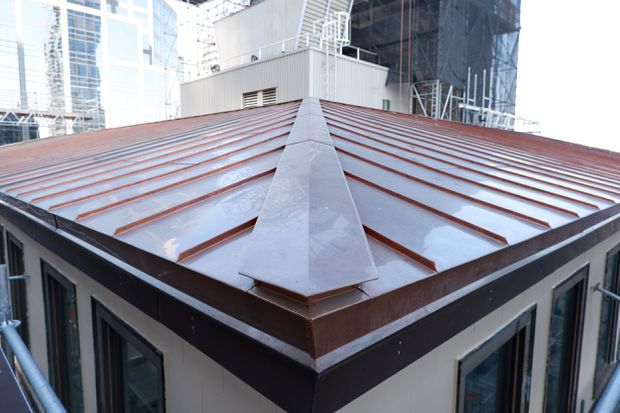
On the 16th, 17th, and 18th storeys, what were “piles of rusty metal” around each window-set have now been restored to “mini temples” with pediments and pilasters painted a period-appropriate oxblood red. Soft lead flashing now protects sills and lugs like a “suit of armour.”
“It’s amazing how much work they put into these parts of the building that are kind of difficult for the naked eye to see,” Mr. McGillivray says. “They just suspended all of these sculptures – ”
Mr. Lewis interrupts: “The cornice is crazy, too, the projection and the decorative elements.”
And speaking of the cornice (which thankfully hadn’t been removed in what Mr. Winterton describes in his JSSAC article as “Toronto’s ‘cornice annihilation’ period of the 1970s”), it needed complete restoration as well, including the replacement of dentils that had been hacked away for cables; those with eagle eyes can spot the shiny new ones.
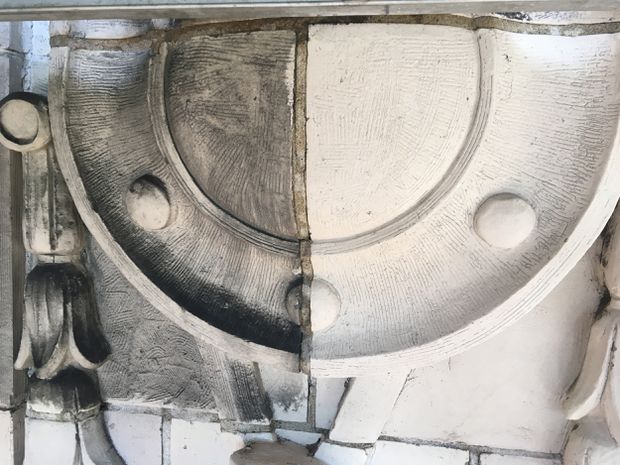
Once the last bits of scaffolding around the Corinthian columns come down – which will be relatively soon and with acanthus leaves restored and chicken wire gone – one won’t need avian vision to appreciate the work that’s gone into 8 King East. The building literally glows.
“With the shiny windows and the creamy terracotta, it does look like opening day in 1915,” Mr. McGillivray says.
“It looks crackin’ from the street,” Mr. Lewis says.
When workers return after COVID-19 is done, Mr. Rowe says, they’ll surely do a double take: “What is this building, I’ve never seen it before!”
